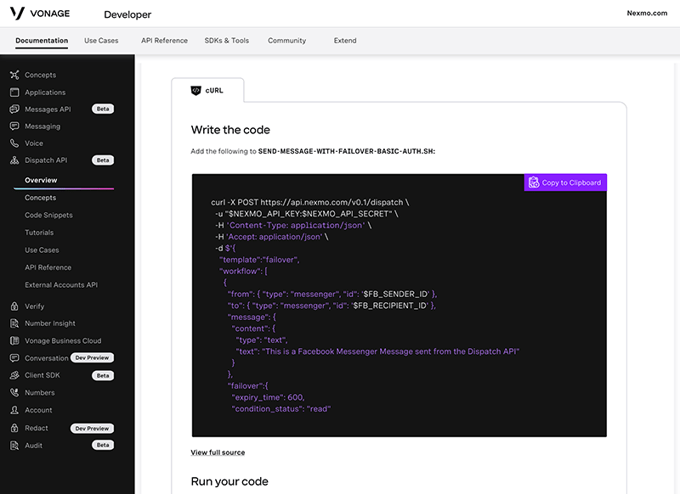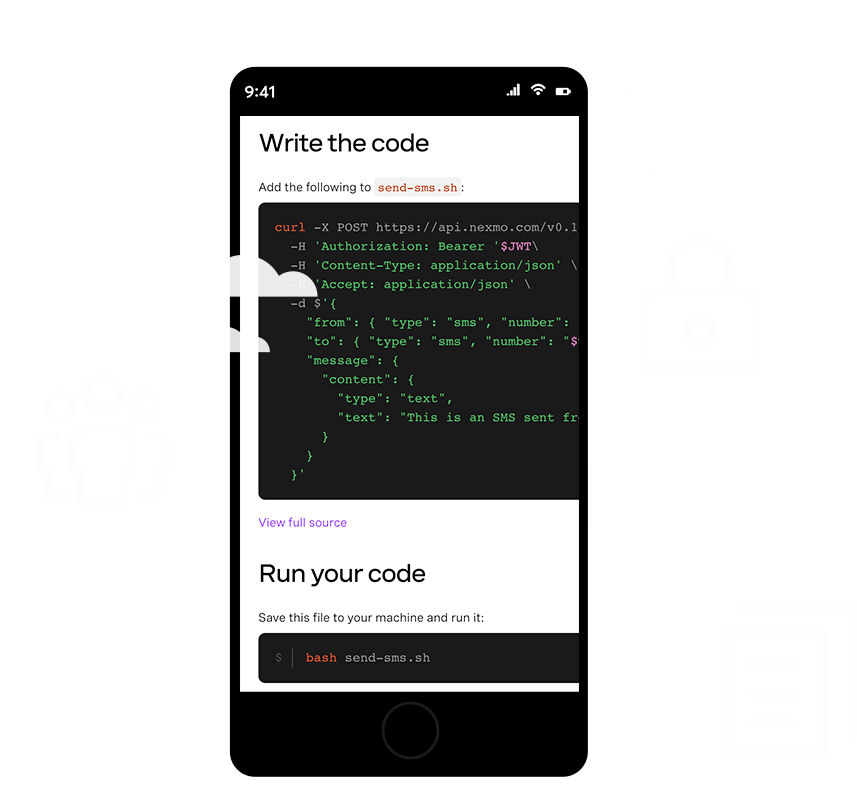How to get started with Vonage SMS API
Vonage's SMS API enables you to send and receive text messages to and from users worldwide, using our REST APIs. We offer SDKs for all your favorite platforms and programming languages Android, iOS, JavaScript, Ruby, .NET, PHP, Node.js, Python and Java.


Tutorials & Documentation
- Connect Users via Text Message with Private SMS Communication
- Create Chat-Like Interactions between Your Brand and Customers with Two-way SMS for Customer Engagement
- How to Reassemble Concatenated SMS Messages that Exceed Character Limits
- Provide Customer Support Over SMS
- Send Customers Mobile App Invites via SMS
Over five billion people send text messages a year: so chances are you are familiar with texting. However, you may not be familiar with the technology behind a text message. In this tutorial, you will learn about technologies like SMS that power text messages. Then, you will learn how to send a text message programmatically.
What is a text message?
A text message is an electronic message. Initially, a text message referred to SMS, which stands for short message service. SMS is a service for sending short messages over wireless networks using standardized communication protocols. Neil Papworth sent the first SMS message on December 3, 1992, when he wrote Merry Christmas to his co-worker Richard Jarvis.
Since then, texting has evolved. For example, people now often share images, audio, and other types of multimedia. This change led to the development of MMS, which stands for multimedia messaging service. As you may have guessed, MMS lets you send text messages with different types of multimedia, such as images.
Despite the advent of MMS, SMS messages remain popular, with over two trillion sent every year.
One advantage of SMS messages is they are cheaper to send. Another advantage is not all customers can receive MMS messages.
Now that you are familiar with the technologies behind text messages let's dive into sending one with just a few lines of code.
Prerequisites
To follow this tutorial, you need to create a Vonage account.
How to send a text message
Sending a text message programmatically is simple.
You can write code to use Vonage's SMS API to send a text message in less than five minutes.
Ready to give it a try?
First, open up your command line and set the following environment variables:
